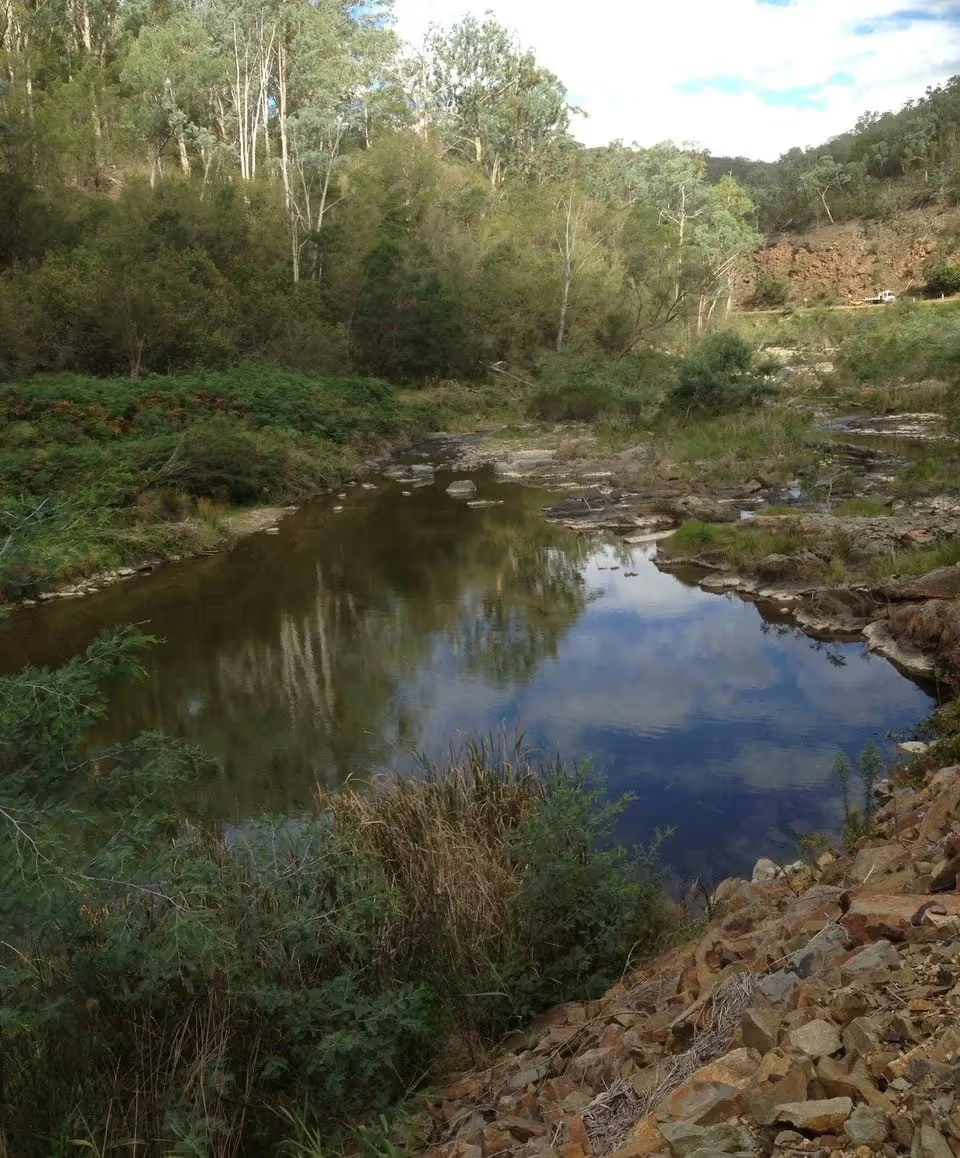Habitat includes both abiotic (non-living) and biotic (living) components. The aboitic components include water body geomorphology (beds, banks, shape), the flow characteristic (high, low, fast, slow) and bed substrate (for example, gravel or sand) type, together with the water chemistry. In most instances, these characteristics are highly dynamic in Australian inland waters, and they directly influence fish and other living things.
Source: Koehn, J.D. and Kennard, M.J. (2013). Habitats, In, Ecology of Australian Freshwater Fishes., Humphries, P. and Walker, K (eds), pp 81-104, CSIRO Publishing, Victoria, Australia
There are two broad habitat types within freshwater environments, lotic habitats (flowing waters) and lentic habitats (non-flowing waters).
Lotic habitats like rivers and streams, are formed by the interactions between the landscape, geology, climate and vegetation where they are located. The intensity, frequency and duration of rainfall, as well as the gradient, combine to impose energy on the river channel. This creates structures important to fish such as pool/riffle sequences, substrate (riverbed) diversity, undercut banks etc.
Rivers and streams interact in three dimensions.
Lentic habitats are characterised by a general lack of flow, particularly in isolated lakes. The most common natural lentic habitats in the Murray-Darling Basin are associated with floodplains. These floodplains may take on many of the characteristics of lotic habitats during over bank flood events. Persistent floodplain wetlands (ones that don’t dry up) form important refugia for fish when the rest of the floodplain dries up.
The occurrence of lentic habitats has increased significantly since European settlement as a result of the construction of dams and weirs. Much of the Lower Murray resembles a lentic habitat for significant periods due to the number of locks along its length, and this has led to a lack of flow diversity.




Since European settlement there has been significant habitat degradation throughout the Murray-Darling Basin. This has led to a decline in the numbers and distribution of native fishes. Impacts include; regulation or modification of in stream flows, physical alteration of habitats (infrastructure, river engineering), desnagging, removal of riparian vegetation, erosion and siltation caused by poor land management, changes in water quality (for example, increased salinity), barriers to fish movement reducing access to critical habitat, introduction of alien species (like Carp ) etc.
The Native Fish Strategy (NFS), released in 2003, began addressing the multiple causes of degraded condition of river systems throughout the Murray-Darling Basin with the aim of rehabilitating habitats and fish populations over a 50 year period. The Demonstration Reach program has promoted habitat rehabilitation through involving local communities in the rehabilitation of river reaches and demonstrating the benefits for native fish populations and river health in general.
Future rehabilitation activities continue to build on the experiences of the Native Fish Strategy and focus on protecting and rehabilitating critical fish habitats (e.g. drought refugia), maintaining connectivity between habitats and maintaining habitat diversity and quality across the Basin. Actions should continue to be underpinned with good science and an adaptive management approach.
